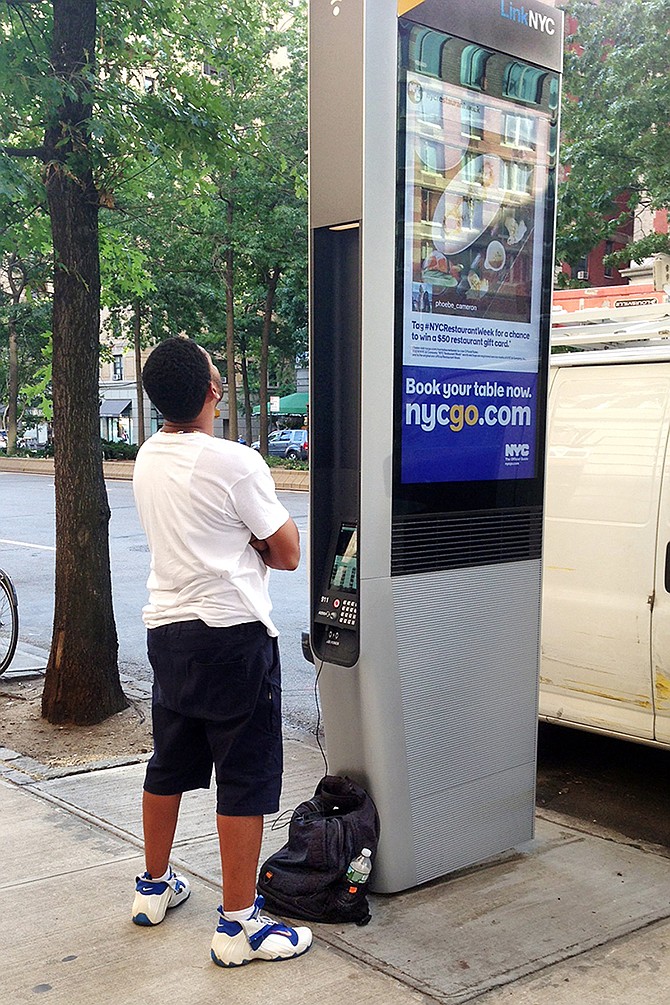NEW YORK (AP) - An ambitious effort to replace obsolete New York City pay phones with Wi-Fi kiosks that offer free web surfing and phone calls has been a hit with panhandlers and the homeless, the least-wired people in the city.
The city doesn't track who is using the kiosks, but anecdotal evidence suggests many users of the new LinkNYC terminals are living on the streets. On several recent weekdays, people wearing plastic garbage bags or hauling dented shopping carts were hunkered down at terminals in Manhattan.
"It's free. That's the best part about it," said a tall man drinking a beer out of a paper bag as he watched an R. Kelly video at a terminal on Eight Avenue in Manhattan's Chelsea neighborhood.
The man, who would give only his street name, "Beef Stew," said besides listening to music, he uses the sidewalk kiosks to charge his phone.
Matthew Kane, 46, was sitting in front of a LinkNYC kiosk on Eighth Avenue last week charging his phone and holding a cardboard sign that said, "She Had a Better Lawyer." The sign was effective: One man gave Kane a $20 bill and another gave him a slice of pizza during the space of a five-minute conversation.
Kane, who said he was staying with acquaintances "here and there," guessed about half of the people he sees using the kiosks are homeless.
"It keeps people connected to the rest of reality," he said.
The Wi-Fi program is a public-private initiative run by CityBridge, a consortium of tech companies.
The first units were installed in January 2016. There are now about 350, mainly along Eighth Avenue on Manhattan's west side and Third Avenue on the east side, with plans for 7,500 or more throughout the city.
The two sides of the narrow kiosks are digital billboards that display paid advertisements. Revenue from the ads pays for the program. A tablet-size screen in front provides fast web access. As with computers in libraries and schools, filters block access to pornography.
There are free domestic calls provided by Vonage, a headphone jack and a USB port for cellphone charging.
People who have their own smartphones and laptops can use the free Wi-Fi broadcast from each kiosk by registering an email address.
The 9-foot kiosks are intended to be accessed standing up, but users have placed discarded chairs and crates in front of some of the units in order to sit at the kiosks and use them more comfortably, prompting complaints from nearby merchants.
"You have people sitting on castaway street furniture or milk crates, and some of them seem to be there long amounts of time," said Dan Pisark, vice president for retail services at the 34th Street Partnership, a business group.
CityBridge and the New York City officials who oversee the program said they aim to provide internet access to New Yorkers who don't have it, though not to the homeless specifically.
"When we set out to bring Wi-Fi to sidewalks at no cost to taxpayers, we aimed not just to replace outdated pay phones with something more useful, but to provide free services to all residents, including the one in five New Yorkers who don't have broadband access at home," said Natalie Grybauskas, a spokeswoman for Mayor Bill de Blasio.
At least a few down-and-out users of the terminals said they were using them to try finding work.
Michael Klein, 39, who said he has been staying with different people since his father kicked him out for substance abuse, said he has used LinkNYC to look up information on Google, to make phone calls and to post "a half-assed resume" on Craigslist.

